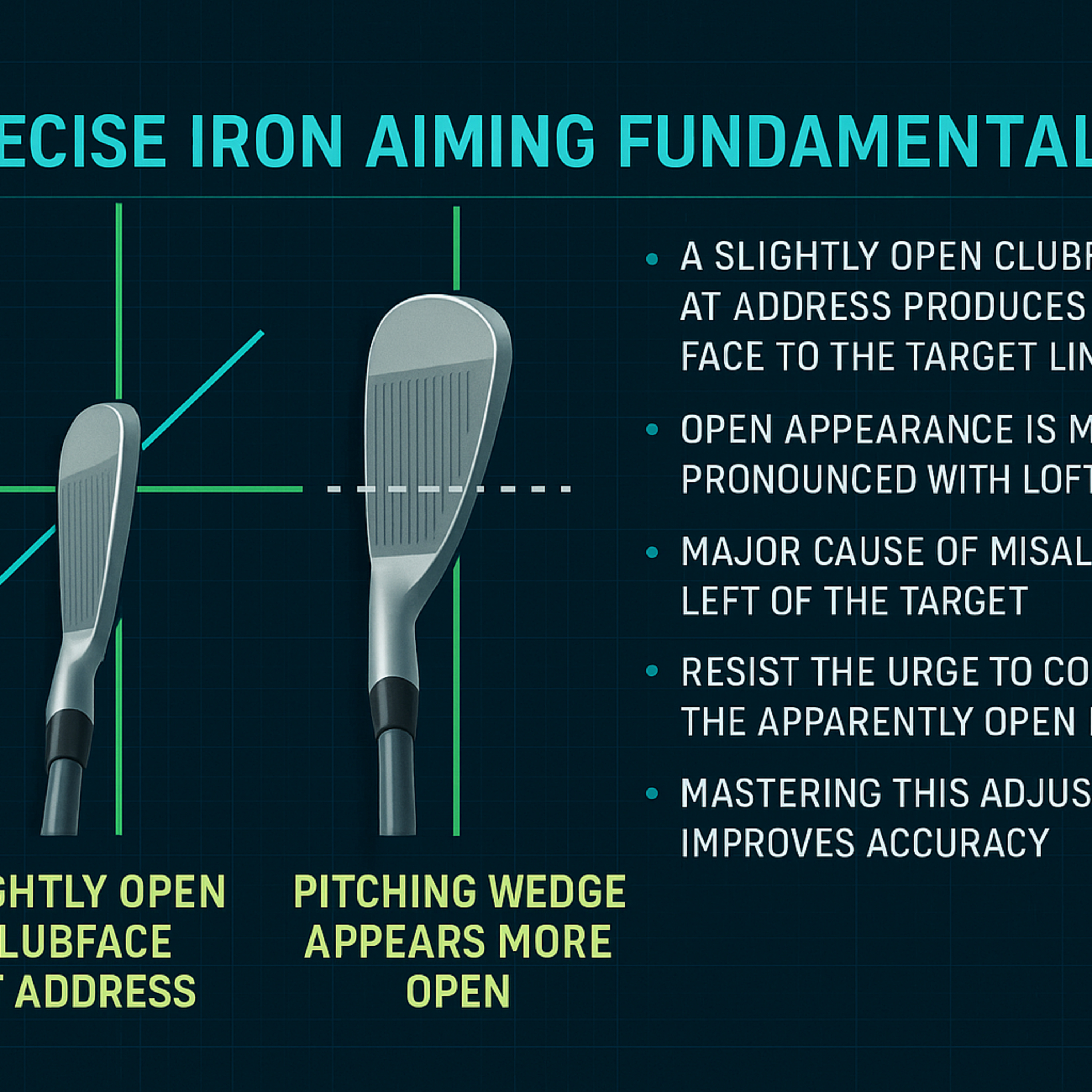#218 Precise Iron Aiming Fundamentals
- Author
- Golf247.eu
- Published
- Fri 09 May 2025
- Episode Link
- https://podcasters.spotify.com/pod/show/puttin-pro/episodes/218-Precise-Iron-Aiming-Fundamentals-e325jh6
This section focuses on the correct alignment of irons in golf. It explains that the visual perception of the clubface can often be misleading; in order to truly aim straight, the clubface must appear slightly open at address, especially with higher-lofted clubs. The importance of a balanced stance, properly fitted grip size, and correct body posture for precise alignment is emphasized.
The text details how hand positioning and shaft angle affect alignment. Ultimately, the goal is to teach golfers to trust natural alignment and to avoid manipulating the clubface at address.
Based on the provided source, the optical appearance of the clubface affects precise alignment in the following ways:
- When viewed from the front, the clubface appears square to the target line.
- However, as the toe of the club is raised, the clubface immediately begins to aim left.
- To maintain a truly square clubface relative to the target line, it must appear slightly open at address.
- This effect is more pronounced with higher-lofted clubs, such as a pitching wedge, where the face looks visually even more open.
- Many players instinctively attempt to visually square the clubface, leading them to aim unintentionally far left.
- It is essential to understand that when the clubface looks slightly open, it is actually correctly aligned.
- From a top-down view, when the sole of the iron lies flat on the ground, the clubface points perfectly down the target line. However, once the toe is raised, the clubface closes drastically.
- Players often attempt to "correct" the seemingly open face by closing it, resulting in misalignment to the left of the target.
- Proper training requires resisting this impulse and trusting the correct, slightly open appearance.
- Although visually challenging at first, mastering this adjustment significantly improves accuracy.
- Ignoring the misleading appearance of the clubface and learning proper setup techniques ensures much straighter ball flights.
- Correct setup habits eliminate the need to manipulate the clubface at address, dramatically improving consistency and performance.
Why the Clubface Must Appear Slightly Open at Address:
1. Visual Deception:
When viewed head-on, the clubface seems square to the target line. However, once the toe of the club is elevated (which often happens at address), the face immediately points left.
2. Physical Reality:
From a top-down perspective, if the sole of the iron rests flat against the ground, the face aligns perfectly with the target line. However, raising the toe causes the face to close significantly relative to the target line.
3. Counteracting the Closing Effect:
To neutralize this physical closing and ensure that the clubface is actually square, it must appear slightly open to the player at address.
4. Avoiding Common Errors:
Many players instinctively try to make the clubface look square, which, due to the above effect, causes unintended alignment left of the target. Attempting to correct the perceived openness by closing the face results in misalignment.
5. Necessary Trust:
Proper training demands resisting the instinct to "fix" the apparent openness and instead trusting the correct, slightly open look. Although visually uncomfortable at first, this approach substantially improves accuracy once mastered.
Conclusion:
The clubface must appear slightly open at address to counterbalance the natural closing effect caused by the toe elevation and to ensure true square alignment with the target line. Ignoring misleading visual cues and trusting the proper, slightly open appearance are essential for achieving accurate, repeatable aim.
